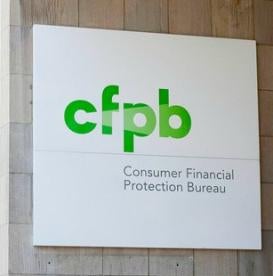On May 26, the Consumer Financial Protection Bureau (the Bureau or CFPB) issued its third Circular, emphasizing that creditors must adhere to the Equal Credit Opportunity Act (ECOA) and Regulation B, even when they employ complex algorithms, sometimes referred to as uninterpretable or “black-box” models, to render credit decisions. The Circular explains that companies must provide an applicant with the precise reasons for the denial of a credit application or adverse action, even if the creditor company uses complex credit algorithm models that do not allow even the creditor itself to “accurately identify[] the specific reasons for denying credit or taking other adverse actions.” Thus, the CFPB will not accept a generic statement that a consumer did not meet a lender’s proprietary lending standards model as a sufficiently precise, compliant explanation for an adverse credit determination.
The Circular makes clear that federal consumer protection laws apply, and are enforced, regardless of the technology a creditor employs. It also declares that noncompliance with ECOA and Regulation B—which require a creditor to state the main reason or reasons for an adverse action—cannot be justified where the technology a creditor “employs to evaluate applications is too complicated or opaque to understand.” CFPB Director Rohit Chopra explained, “[c]ompanies are not absolved of their legal responsibilities when they let a black-box model make lending decisions[.]” Thus, in the CFPB’s view, a creditor violates Regulation B where it uses a system that fails (either by design or inadvertence) to produce an accurate, specific explanation for every credit decision.
The press release announcing the Circular highlights third parties that aid the Bureau in enforcement efforts. The Bureau explains that whistleblowers play a “central role” in providing information about companies using these so-called “black-box” models and encourages company employees—in particular, tech workers—to be forthcoming with information. Government partners are also, the CFPB notes, “vital” in aiding enforcement. To that end, the CFPB explains that it continues to monitor the work of government entities, including the National Institutes of Standards and Technology, to assess the risks and benefits of emerging technologies.
This latest development aligns with the Bureau’s other recent proactive measures. A creditor’s bare explanation that its “system” or “model” made the decision is not acceptable to the CFPB, especially where the creditor itself cannot pinpoint the specific reason(s) that caused its technology to render a particular adverse decision. Further, the CFPB’s warning that it will not accept a company’s explanation that technology is “too new” shows that a creditor defending lending-law violations because its technology is immature and did not perform as intended or expected is unlikely to find a receptive audience. Fintechs and other affected companies may wish to evaluate whether their technology and lending models adequately inform them and consumers of the specific reasons for credit decisions.
* Special thanks to Summer Associate Miranda Carnes, a 3L at the American University Washington College of Law, for her valuable contributions to this GT Alert.




 i
i


